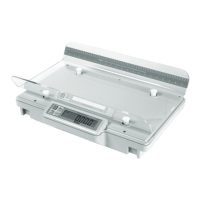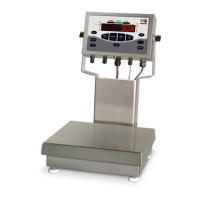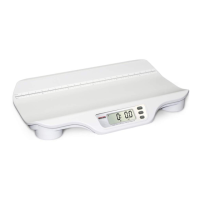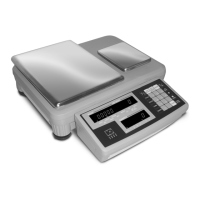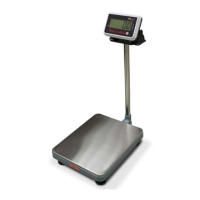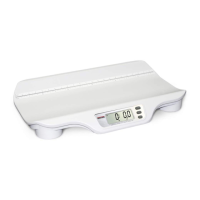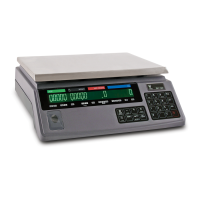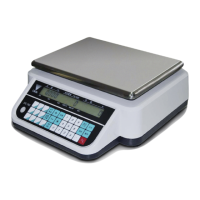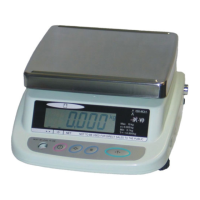Do you have a question about the Rice Lake 120 and is the answer not in the manual?
Brief overview of the 120 digital weight indicator and its features.
Important safety definitions, precautions, and general warnings for operating the indicator.
Details the different operational modes: Normal, Panel, Configuration, and Test modes.
Illustrates the 120 keypad and LED annunciators, explaining key functions.
Explains the function of the eight LED annunciators on the display.
Provides instructions for basic operation in weighing and panel modes.
Guide to unpacking the indicator and checking included components.
Details the indicator's enclosure, ports, and setup switch location.
Information on connecting serial cables for EDP and printer ports.
Instructions for wiring load cells via 6-pin connector or cord grip.
Step-by-step instructions for safely disassembling the indicator enclosure.
Lists part numbers and descriptions for replacement components.
Outlines methods for configuring the indicator: front panel, EDP commands, and Revolution utility.
Describes using the Revolution III software for PC-based indicator configuration.
Explains configuration using EDP commands sent via a PC or terminal.
Details navigating menus using front panel keys for configuration.
Graphic representation and parameter details for the CONFIG menu.
Step-by-step guide to calibrating the indicator using the front panel.
Overview of the EDP command set, including key press, reporting, and parameter commands.
Procedure for saving indicator configuration data to a PC via the EDP port.
Method for loading saved configuration data from a PC onto the indicator.
Lists commands used to format printed output for tickets.
How to customize print formats using the EDP port and commands.
How to customize print formats using the PFORMT menu on the front panel.
Lists common error messages and their solutions for the indicator.
Describes the format of continuous data sent to the EDP or printer port.
Configurable filter stages that control the effect of A/D readings on the displayed weight.
Parameters for overriding filter averaging to improve settling time.
Procedure to determine vibration effects and optimize digital filter settings.
Brief overview of the 120 digital weight indicator and its features.
Important safety definitions, precautions, and general warnings for operating the indicator.
Details the different operational modes: Normal, Panel, Configuration, and Test modes.
Illustrates the 120 keypad and LED annunciators, explaining key functions.
Explains the function of the eight LED annunciators on the display.
Provides instructions for basic operation in weighing and panel modes.
Guide to unpacking the indicator and checking included components.
Details the indicator's enclosure, ports, and setup switch location.
Information on connecting serial cables for EDP and printer ports.
Instructions for wiring load cells via 6-pin connector or cord grip.
Step-by-step instructions for safely disassembling the indicator enclosure.
Lists part numbers and descriptions for replacement components.
Outlines methods for configuring the indicator: front panel, EDP commands, and Revolution utility.
Describes using the Revolution III software for PC-based indicator configuration.
Explains configuration using EDP commands sent via a PC or terminal.
Details navigating menus using front panel keys for configuration.
Graphic representation and parameter details for the CONFIG menu.
Step-by-step guide to calibrating the indicator using the front panel.
Overview of the EDP command set, including key press, reporting, and parameter commands.
Procedure for saving indicator configuration data to a PC via the EDP port.
Method for loading saved configuration data from a PC onto the indicator.
Lists commands used to format printed output for tickets.
How to customize print formats using the EDP port and commands.
How to customize print formats using the PFORMT menu on the front panel.
Lists common error messages and their solutions for the indicator.
Describes the format of continuous data sent to the EDP or printer port.
Configurable filter stages that control the effect of A/D readings on the displayed weight.
Parameters for overriding filter averaging to improve settling time.
Procedure to determine vibration effects and optimize digital filter settings.

